City Lights, Pokémon Fights: A Kalos Comeback
In the glittering gridlock of Lumiose City, where the Eiffel Tower’s echo looms large and streetlamps cast long shadows on cobblestone confessions, Pokémon Legends: Z-A ignites like a Mega Evolution mid-metro meltdown. Developed by Game Freak, the Kyoto craftsmen who’ve conjured critter-catching conundrums since 1996, and published by The Pokémon Company and Nintendo, this October 16, 2025, action RPG (The Nintendo Switch 2 Edition is $99.99 CAD and the Nintendo Switch Edition is $84.99 CAD) marks the ninth generation’s second Legends leap, a standalone sequel to X and Y‘s sixth-gen sparkle and Arceus‘s eighth-gen sprawl. Exclusive to Switch and Switch 2 (with the latter’s enhanced edition blooming brighter at 4K/60fps), it confines its 30-40 hour odyssey to Kalos’s capital, a Paris pastiche reborn as a bustling beast-befriending burg, where urban redevelopment unearths Rogue Mega Evolutions and rank-rising rivalries. It’s a bold pivot from Arceus‘s ancient wilds to modern metropole, trading Hisui’s horizons for Lumiose’s labyrinths, where Zygarde’s serpentine gaze guards against Quasartico Inc.’s corporate capers.
You slip into the shoes of a nameless trainer (customizable from androgynous avatars to fashion-forward flair), arriving as a tourist amid the city’s post-Flare facelift: wild zones weave Pokémon into promenades, from café-corner Cottonee to alleyway Absol ambles. Befriend Taunie (your sunny sidekick, a street-smart sketch artist) or Urbain (a brooding bard with a bassline backstory), snag a starter from Gold/Silver‘s Chikorita/Totodile or Black/White‘s Tepig, and dive into the Z-A Royale, a nocturnal knockout tournament where nighttime Battle Zones bloom like bioluminescent brawls, trainers prowling for pre-emptive pounces that stun with surprise strikes. The plot pulses with post-Y/Y intrigue: five years on, Team Flare’s fallout fuels Quasartico’s “Ange” anomaly, a Prism Tower power plant pulsing Mega Energy that maddens mons into marauding mechs. Rally Team MZ, Hotel Z’s eclectic ensemble, from AZ’s immortal ennui (the 3,000-year-old king, Floette at his side) to Lysandre’s lingering lament (immortal survivor scheming atonement), to quell the chaos, culminating in a Zygarde showdown that spirals into Xerneas/Yveltal yarns and a Royale rebirth as the Infinite Z-A.
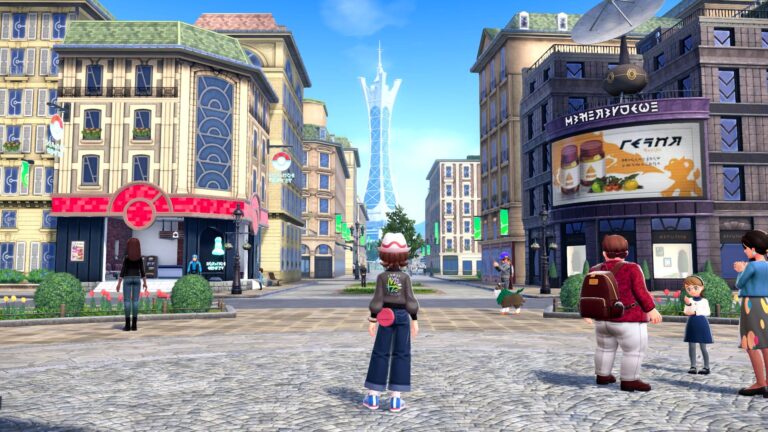 Critics carve it as a “strong step forward,” praising its “invigoratingly original combat” and “surprisingly good narrative” that tackles redevelopment’s rifts, gentrification ghouls displacing wild zones, corporate curses clashing with communal charms, without Arceus‘s aimless amble. Yet, the city’s “restrictive” reins rankle: Lumiose’s loops feel “lifeless and flat,” a “sub-mediocre sprawl” that’s explorable in hours, echoing Reddit rants of “bland repetition” that repels roamers. Leaks’ legacy lingers, the Teraleak/Freakleak’s 1TB torrent of betas (scrapped Johto jaunts with time-travel trainers, parkour pokes, and Pokémon rides) and ROM rips that ripped reveals weeks early, casting a controversial comma, though the final’s “polished paradise” proves patches patched the pandemonium. Subtle humor simmers in the starters’ surprise: Tepig’s teacup tantrums or Totodile’s toddler tears, a wry reminder that even in urban unrest, Pokémon’s pint-sized pandemonium persists.
Critics carve it as a “strong step forward,” praising its “invigoratingly original combat” and “surprisingly good narrative” that tackles redevelopment’s rifts, gentrification ghouls displacing wild zones, corporate curses clashing with communal charms, without Arceus‘s aimless amble. Yet, the city’s “restrictive” reins rankle: Lumiose’s loops feel “lifeless and flat,” a “sub-mediocre sprawl” that’s explorable in hours, echoing Reddit rants of “bland repetition” that repels roamers. Leaks’ legacy lingers, the Teraleak/Freakleak’s 1TB torrent of betas (scrapped Johto jaunts with time-travel trainers, parkour pokes, and Pokémon rides) and ROM rips that ripped reveals weeks early, casting a controversial comma, though the final’s “polished paradise” proves patches patched the pandemonium. Subtle humor simmers in the starters’ surprise: Tepig’s teacup tantrums or Totodile’s toddler tears, a wry reminder that even in urban unrest, Pokémon’s pint-sized pandemonium persists.
For Arceus acolytes who amassed 20 million sales, Z-A’s city slicker shift shines in its specificity, Lumiose as living lore, where Prism Tower’s pulse powers the plot, but sags in scope, a “baby step” that’s bold but bounded. With a million pre-orders and Metacritic’s 82 (88% recommending), it’s a sales supernova, though whispers warn the “Switch 1 slide” slides visuals into “Wii U weariness.” It’s a Legends lore-lift that’s luminous but limited, a Kalos kiss that kisses goodbye to the great outdoors.
Real-Time Rumbles: From Turn-Based Tango to Action Avalanche
Gameplay in Legends: Z-A leaps from Arceus‘s action antecedents into a real-time rumble that’s “thrilling, strategic, and refreshingly different,” ditching turn-based tedium for a fluid fray where positioning parleys with Pokémon prowess, dodging dodges delving into dynamic duels that demand directional dances. Battles bloom in two flavors: wild zone whirls where mons mingle mid-metro (no overworld ambles, just seamless skirmishes sparked by proximity pounces), and Z-A Royale royales, nightly no-holds-barred brawls in Battle Zones where trainers taunt with pre-emptive pokes, stunning starters for seconds of surprise supremacy. The gauge game’s genius: Mega Energy meters mega-morphs mid-melee, filling via foe-flaying fury (deals damage? Dash to dazzle with a temporary titan tantrum), extendable by extended engagements, a “near-perfect loop” that’s “thoroughly enjoyable,” as testers tout, though its “chaotic” churn chafes turn-based traditionalists craving calculated cadences.
The arsenal awakens with basics, katana-kicks for close-quarters cleaves, bow barrages for distant darts, but burgeons into a bushido buffet: yari spears skewer spearmen, kusarigama chains whip whirling dervishes, ōdachi greatswords cleave clusters like a colossus in a crowd, and dual-katana duels dazzle with dual-wield delirium. Ranged riffs return refined: hankyu half-bows for hushed headshots, yumi longbows for lethal lobs, tanegashima matchlocks for thunderous takedowns, throwable tomahawks toss tactical twists, disarms pluck polearms for pilfered pitches. The wolf summon adds lupine layers: whistle for whirlwind worries that flank foes or fetch finishers, a “furry friend with fangs” that synergizes with sibling summons (Jubei’s javelins join the jamboree). Stamina stewardship stings sweetly: spirit surges for superhuman slashes, but overextend exposes exhaustion, a risk-reward rhythm rewarding restraint.
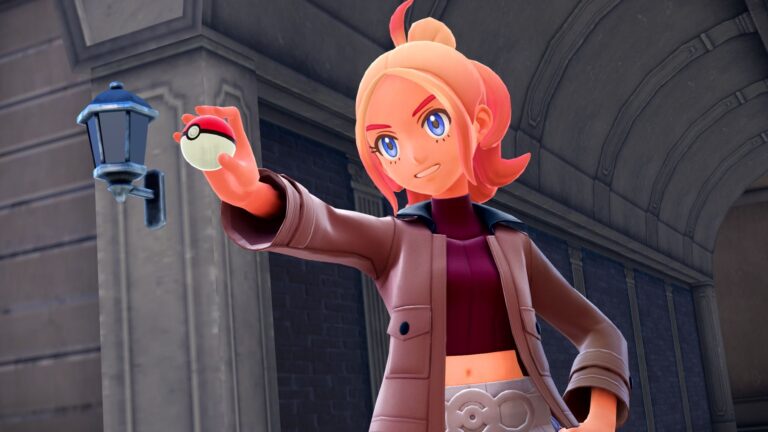 Exploration expands Lumiose into an “urban opus” of optional odysseys: wind-whipped wilds where golden birds beckon onsen oases for health hikes, fox-following foxfire trails to Inari shrines for charm charms. New nods to Nippon’s north: sumi-e ink sessions supplant haiku haikus, brushing bamboo backdrops for bounty boosts; zeni hajiki gambling dens dice destiny for duelist duels; shamisen strums summon spectral songs spotlighting landmarks like lost lighthouses. Camps cradle calm: cook kitsune udon for vigor vials or craft caltrops from canyon clams, a homestead haven healing without halting. Side quests sparkle sporadically: bounty hunts for bandit bounties, mastery missions for melee maneuvers, though their “prehistoric plod” palls, padding plots with pedestrian ploys. It’s a sandbox sculpted with subtlety, where every emote, bathing bliss or bamboo-bashing zen, etches evolution from avenger to artisan.
Exploration expands Lumiose into an “urban opus” of optional odysseys: wind-whipped wilds where golden birds beckon onsen oases for health hikes, fox-following foxfire trails to Inari shrines for charm charms. New nods to Nippon’s north: sumi-e ink sessions supplant haiku haikus, brushing bamboo backdrops for bounty boosts; zeni hajiki gambling dens dice destiny for duelist duels; shamisen strums summon spectral songs spotlighting landmarks like lost lighthouses. Camps cradle calm: cook kitsune udon for vigor vials or craft caltrops from canyon clams, a homestead haven healing without halting. Side quests sparkle sporadically: bounty hunts for bandit bounties, mastery missions for melee maneuvers, though their “prehistoric plod” palls, padding plots with pedestrian ploys. It’s a sandbox sculpted with subtlety, where every emote, bathing bliss or bamboo-bashing zen, etches evolution from avenger to artisan.
The multiplayer melee, Ghost of Yōtei: Legends looming in 2026 as free update fuel, promises two-player tales of mythic melees against monstrous Yōtei shades, a co-op crescendo that crowns the city’s confines with communal chaos. Quirks? The city’s “restrictive reins” rankle roamers, wild zones “extremely tiny” that tame traversal into tedium, as Reddit roamers roar. Combat’s “Xenoblade churn” charms but chafes purists, a “proof of concept” that’s possible but polarizing. Yet, it’s this unyielding urban arc, battles beating beasts into butter, that beats boredom, a luminous Legends lift that’s limited but lovely.
Lumiose Luminescence: A Metro Mega-Morphosis
Visually, Z-A is a luminous Lumière, Game Freak’s gridlock glow a hyper-real hymn to Kalos’s capital: boulevards bustle with bioluminescent blooms, Prism Tower’s pulse powers panoramas of pastel patisseries and pop-art promenades, wild zones weaving mons into metro mosaics where Absol ambles amid absinthe alleys. The art direction alchemizes authenticity with artistry: redevelopment rifts ripple in ruined rooftops reclaimed by rogue roses, aurora arcs arcing over Ainu-inspired a-frames (nod to consulted elders), all in a palette pivoting from pastel peace to crimson carnage. Mega morphs mesmerize: Zygarde’s serpentine surge shimmers like shattered silk, Xerneas/Yveltal’s yarns yarn into yōkai yarns with fractal flair. Performance on Switch purrs at 30fps fluidity, though “lifeless and flat” frames flicker in fog, a “Wii U weariness” that’s wearisome but workable, Switch 2’s 60fps salvation salves the sores.
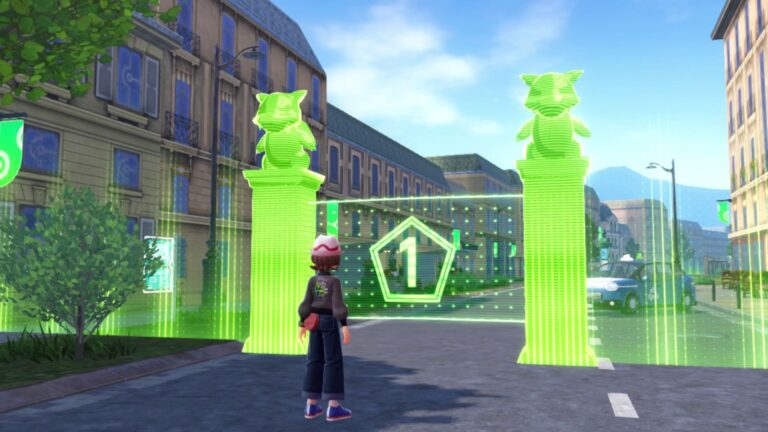 Audio arcs with Minako Adachi’s melodic mastery: a soundtrack swelling from shamisen shivers to taiko thunder, a Kalos cantata haunting with haiku harmony, while 3D binaural booms, wind’s wistful whoosh, blade’s brutal bite, burrow into the brain. Taunie’s tuneful twang or Urbain’s brooding bassline backstory basslines battles, a dual-voiced duality doubling the delight. It’s a sensory shogun subjugating, minor menu muddles melting in the majesty.
Audio arcs with Minako Adachi’s melodic mastery: a soundtrack swelling from shamisen shivers to taiko thunder, a Kalos cantata haunting with haiku harmony, while 3D binaural booms, wind’s wistful whoosh, blade’s brutal bite, burrow into the brain. Taunie’s tuneful twang or Urbain’s brooding bassline backstory basslines battles, a dual-voiced duality doubling the delight. It’s a sensory shogun subjugating, minor menu muddles melting in the majesty.
Royale Ranks and Rogue Rampages: Peaks and Pits
Z-A‘s Royale ranks reap a bounty of brilliance: the real-time rumble’s “invigorating originality,” a “thrilling strategic shift” that shifts series shackles into shackle-free skirmishes, and Lumiose’s “integral” intimacy, a “Yakuza-like” lore-layer where redevelopment rifts ripple with real resonance, gentrification ghouls displacing wild zones, corporate curses clashing communal charms. The non-linear nemesis hunt hooks like a harpoon: tackle the Snake’s serpentine schemes in misty mangroves or Oni’s ogreish outposts in obsidian onsen, each lieutenant a legend-laden labyrinth layering lore with lethal lures. Side scrolls sparkle with specificity: sumi-e sessions inking introspection into inventory, zeni hajiki dens dicing destiny for duelist duels, though their “prehistoric plod” palls, padding plots with pedestrian ploys. At its $60 mantle, with 88% recommendation rapture and “one of the strongest soundtracks,” it’s a sales supernova (topping charts in 13 countries), bolstered by Mega Dimension’s looming 2026 DLC, Hoopa’s hoops and Raichu revamps.
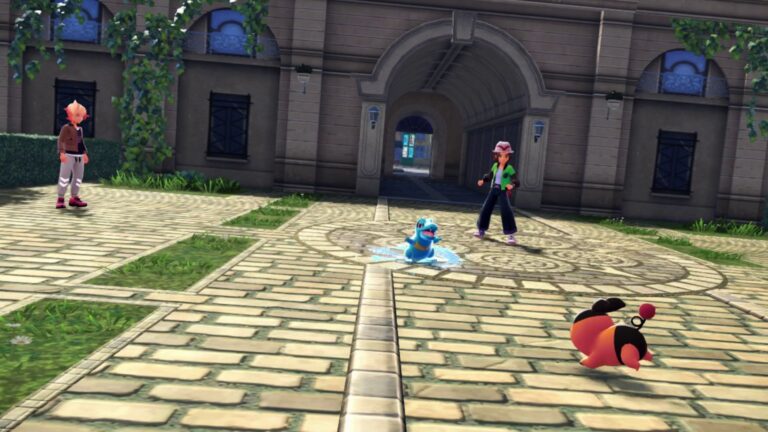 Pits pock the path, however: Lumiose’s “restrictive” reins rankle roamers, a “sub-mediocre sprawl” explorable in hours that echoes “bland repetition,” and side quests’ sagging satisfaction, fetch-fests fetching frustration without flair. Combat’s “chaotic churn” charms but chafes purists, a “proof of concept” polarizing the pantheon, and the open world’s “dated” detours dim the dread, wild zones “extremely tiny” taming traversal into tedium. Leaks’ legacy lingers, the Teraleak/Freakleak’s torrent casting controversy, but the final’s “polished paradise” proves patches patched pandemonium. Community clamor crowns the combat’s “cathartic cleave,” one streamer slaying the Snake in a “snarling symphony,” while whispers warn of “Switch 1 slide” sliding visuals into weariness. Humor haunts: a bounty’s ballad bungling the trainer’s moniker as “Z-A Zoroark,” a wry riff on rogue resemblances.
Pits pock the path, however: Lumiose’s “restrictive” reins rankle roamers, a “sub-mediocre sprawl” explorable in hours that echoes “bland repetition,” and side quests’ sagging satisfaction, fetch-fests fetching frustration without flair. Combat’s “chaotic churn” charms but chafes purists, a “proof of concept” polarizing the pantheon, and the open world’s “dated” detours dim the dread, wild zones “extremely tiny” taming traversal into tedium. Leaks’ legacy lingers, the Teraleak/Freakleak’s torrent casting controversy, but the final’s “polished paradise” proves patches patched pandemonium. Community clamor crowns the combat’s “cathartic cleave,” one streamer slaying the Snake in a “snarling symphony,” while whispers warn of “Switch 1 slide” sliding visuals into weariness. Humor haunts: a bounty’s ballad bungling the trainer’s moniker as “Z-A Zoroark,” a wry riff on rogue resemblances.
It’s a luminous Legends lift that’s limited but lovely, a Kalos kiss kissing goodbye to great outdoors.
Zygarde’s Zenith: A Mega-Morphing Manifesto
What whets Z-A‘s whetstone is its unflinching fusion of urban unrest and Mega majesty: Game Freak’s gridlock glow a hyper-real hymn to Kalos’s capital, where redevelopment rifts ripple with real resonance, gentrification ghouls displacing wild zones, corporate curses clashing communal charms, probing Pokémon’s pantheon with purpose, a feminist foghorn for franchise frontiers. It’s purposeful parry, the real-time rumble’s “invigorating originality” a classroom in combinatorial calculus, yari vs. yokel, kusarigama vs. kitsune, teaching topography’s tricks without tedious tomes, a subtle samurai seminar for sword-sworn scholars. The aurora’s artistry underscores the saga’s soul: vengeance as vortex, where side scrolls like shamisen strums summon spectral songs spotlighting landmarks, weaving whimsy into whirlwind.
Unique unearthings enchant: the “Mega meter” mechanic, where energy evolutions extend engagements into extended epics, or Zygarde’s serpentine surge shimmers like shattered silk, a summon that scales with sibling synergies. Against Arceus‘s ancient amble, Z-A’s yarn yanks the yoke of modernity, Lumiose’s loops a luminous lore-lift that lifts the Legends legacy. Player pilgrims proclaim its “psychic punch,” one recounting a “regret riddle” resurfacing real regrets, underscoring therapeutic terror.
It’s no mere miasma: a manifesto of madness mastered, where every ending etches empathy in the ether.
Final Thoughts
Pokémon Legends: Z-A zooms into the ninth gen with a real-time rumble that’s “thrilling and strategic,” a 30-40 hour homage to Kalos’s capital that outpaces Arceus in intimacy and innovation. Lumiose’s luminous loops layer lore with lethal lures, the Z-A Royale’s nocturnal knockouts knocking knees with pre-emptive pounces, while Mega meter’s morphing mastery crafts combats that cleave like cinematic katanas. Side scrolls sparkle with specificity, sumi-e serenity to shamisen spotlights, proving the city’s confines can contain communal charms without cramping creativity.
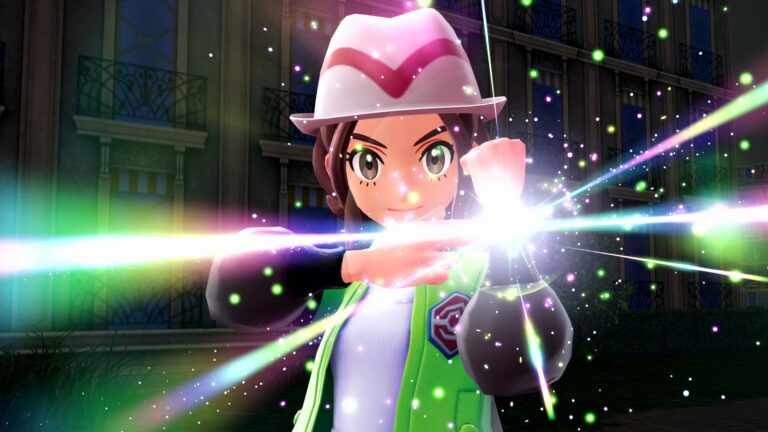 The “restrictive reins” and “prehistoric plod” of side quests snag the stride slightly, with dated detours dimming dread and wild zones’ tininess taming traversal into tedium. Yet, these are nicks in a noble naginata, the Legends lift’s luminous legacy ensuring a shiver that lingers like northern nightfall. For Arceus acolytes or Kalos kissers, it’s a Hokkaido hymn, a vengeful vintage vindicating the veil.
The “restrictive reins” and “prehistoric plod” of side quests snag the stride slightly, with dated detours dimming dread and wild zones’ tininess taming traversal into tedium. Yet, these are nicks in a noble naginata, the Legends lift’s luminous legacy ensuring a shiver that lingers like northern nightfall. For Arceus acolytes or Kalos kissers, it’s a Hokkaido hymn, a vengeful vintage vindicating the veil.
We prepared this review with a digital copy of Pokémon Legends: Z-A for the Nintendo Switch version provided by Nintendo.




